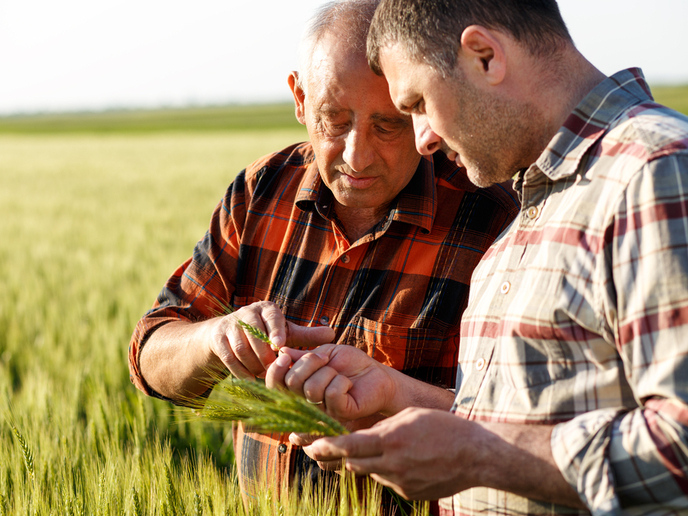Integrated control of diseases is improved for better cereal crops and more sustainable agriculture
Cereals, including wheat, maize and rice, are the most important source of human calories. Demand for cereals, for both food and animal feed use, is projected to reach some 3 billion tonnes by 2050, up from today’s nearly 2.1 billion tonnes. The top 10 plant pathogens of economic and scientific importance include pathogens causing diseases of leaves, roots and heads of European and global cereals. The EU-funded CEREALPATH project is tackling this challenge, providing a new generation of scientists with the expertise to develop novel weapons in the fight against cereal diseases. “This Marie Skłodowska-Curie Innovative Training Network trained early-stage researchers in the broad skills and competencies necessary to innovate in the field of integrated disease control and sustainable cereal production,” says project coordinator Fiona Doohan.
An interdisciplinary approach
The work programme involved 10 beneficiaries and 11 partner organisations from across Europe, encompassing academia, industry and government agencies, each with specific and complementary competencies in the areas of gene discovery and breeding, biological and bioactive disease control and trade-off and pathogen evolution. In these specific research areas, training events, meetings and symposia were held, supported by an extensive management and support function. In addition, research teams worked on individual projects associated with the project’s different research strands. “All three areas underpin integrated and sustainable disease control and sustainable intensification of farming," Doohan explains. "While the majority of researchers’ projects focused on controlling wheat disease, some also centred on improving control of diseases in barley, and the underpinning training is applicable to the broad arena of crop protection.”
Use of biocontrol agents
For the gene discovery and breeding strand, researchers constructed mutant libraries of the fungus responsible for the global stem rust epidemics in the Triticeae species. According to Doohan, these libraries are being used to dissect virulence and host resistance to stem rust by determining which rust strains are now virulent against known stem rust resistance genes. Within the bioactive and biological control strand, scientists tested a range of biocontrol agents for use as disease control agents in crops. “From these projects, we have seen confirmation of the potential uses of these agents, including antifungal activity; we have increased our knowledge of how to maximise our repertoire of biocontrol agents using varied selection media, and also increased our understanding of RNA interference and host-induced gene silencing,” notes Doohan.
A sustainable future
Under the pathogen evolution and trade-off strand, researchers have now begun to untangle the dual role of genes that confer resistance or susceptibility to disease. Furthermore, new resistance genes and pathogen effectors are being identified, using in silico and in planta systems, to aid understanding of the entire pathosystem. “The evolution of disease resistance is also being examined, with evolution of both pathogen and host being studied,” Doohan observes. CEREALPATH will contribute to a greater understanding of plant-pathogen interaction and more sustainable and robust plant-disease management strategies. The project will also contribute to breeding programmes that allow for the development of crops requiring fewer resources. Doohan concludes: “Growers will benefit by reducing the current need for large inputs of chemicals and fuel for crop production. Such sustainable intensification is desired by consumers and will help the environment and biodiversity.”
Keywords
CEREALPATH, cereals, grains, disease control, pathogens, Triticeae, pathosystem, biocontrol agents



